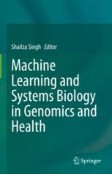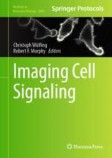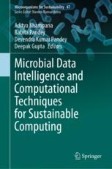Search
Search Results
-
Slideflow: deep learning for digital histopathology with real-time whole-slide visualization
Deep learning methods have emerged as powerful tools for analyzing histopathological images, but current methods are often specialized for specific...

-
TB-DROP: deep learning-based drug resistance prediction of Mycobacterium tuberculosis utilizing whole genome mutations
The most widely practiced strategy for constructing the deep learning (DL) prediction model for drug resistance of Mycobacterium tuberculosis (MTB)...

-
A Low-Cost Proximate Sensing Method for Early Detection of Nematodes in Walnut Using Machine Learning Algorithms
This chapter presents an innovative low-cost proximate sensing method designed for the early detection of nematodes in walnut trees, leveraging...
-
Deep learning improves acoustic biodiversity monitoring and new candidate forest frog species identification (genus Platymantis) in the Philippines
One significant challenge to biodiversity assessment and conservation is persistent gaps in species diversity knowledge in Earth’s most biodiverse...

-
Nonnegative spatial factorization applied to spatial genomics
Nonnegative matrix factorization (NMF) is widely used to analyze high-dimensional count data because, in contrast to real-valued alternatives such as...

-
DeepGRP: engineering a software tool for predicting genomic repetitive elements using Recurrent Neural Networks with attention
BackgroundRepetitive elements contribute a large part of eukaryotic genomes. For example, about 40 to 50% of human, mouse and rat genomes are...

-
Early detection and identification of grape diseases using convolutional neural networks
Crop protection aims to develop an agriculture system that is resilient to common agricultural threats like diseases, pests, and weeds that result in...

-
Construction of Feedforward Multilayer Perceptron Model for Diagnosing Leishmaniasis Using Transcriptome Datasets and Cognitive Computing
Leishmaniasis is an endemic parasitic disease, predominantly found in the poor locality of Africa, Asia, and Latin America. It is associated with...
-

-
JOINT for large-scale single-cell RNA-sequencing analysis via soft-clustering and parallel computing
BackgroundSingle-cell RNA-Sequencing (scRNA-Seq) has provided single-cell level insights into complex biological processes. However, the high...

-
Genomic benchmarks: a collection of datasets for genomic sequence classification
BackgroundRecently, deep neural networks have been successfully applied in many biological fields. In 2020, a deep learning model AlphaFold won the...

-
Automated detection of European wild mammal species in camera trap images with an existing and pre-trained computer vision model
The use of camera traps is a nonintrusive monitoring method to obtain valuable information about the appearance and behavior of wild animals....

-
Deep Learning-Based Cell Tracking in Deforming Organs and Moving Animals
Cell tracking is an essential step in extracting cellular signals from moving cells, which is vital for understanding the mechanisms underlying...
-
New dimension in leaf stomatal behavior analysis: a robust method with machine learning approach
Stomata are specialized pores that play a vital role in gas exchange and photosynthesis. Microscopic images are often used to assess stomatal...

-
Uncovering developmental time and tempo using deep learning
During animal development, embryos undergo complex morphological changes over time. Differences in developmental tempo between species are emerging...

-
Computer Vision-based Remote Care of Microbiological Data Analysis
The field of remote care of microbiological data analysis is rapidly evolving, utilizing computer vision to automate various tasks related to...
-
GraphKM: machine and deep learning for KM prediction of wildtype and mutant enzymes
Michaelis constant (K M ) is one of essential parameters for enzymes kinetics in the fields of protein engineering, enzyme engineering, and synthetic...

-
An optimized graph-based structure for single-cell RNA-seq cell-type classification based on non-linear dimension reduction
BackgroundIt is now possible to analyze cellular heterogeneity at the single-cell level thanks to the rapid developments in single-cell sequencing...

-
Deep Recurrent Neural Networks for the Generation of Synthetic Coronavirus Spike Protein Sequences
With the advent of deep learning techniques for text generation, comes the possibility of generating fully simulated or synthetic genomes. For this...
-
Deep learning-enabled natural language processing to identify directional pharmacokinetic drug–drug interactions
BackgroundDuring drug development, it is essential to gather information about the change of clinical exposure of a drug (object) due to the...

